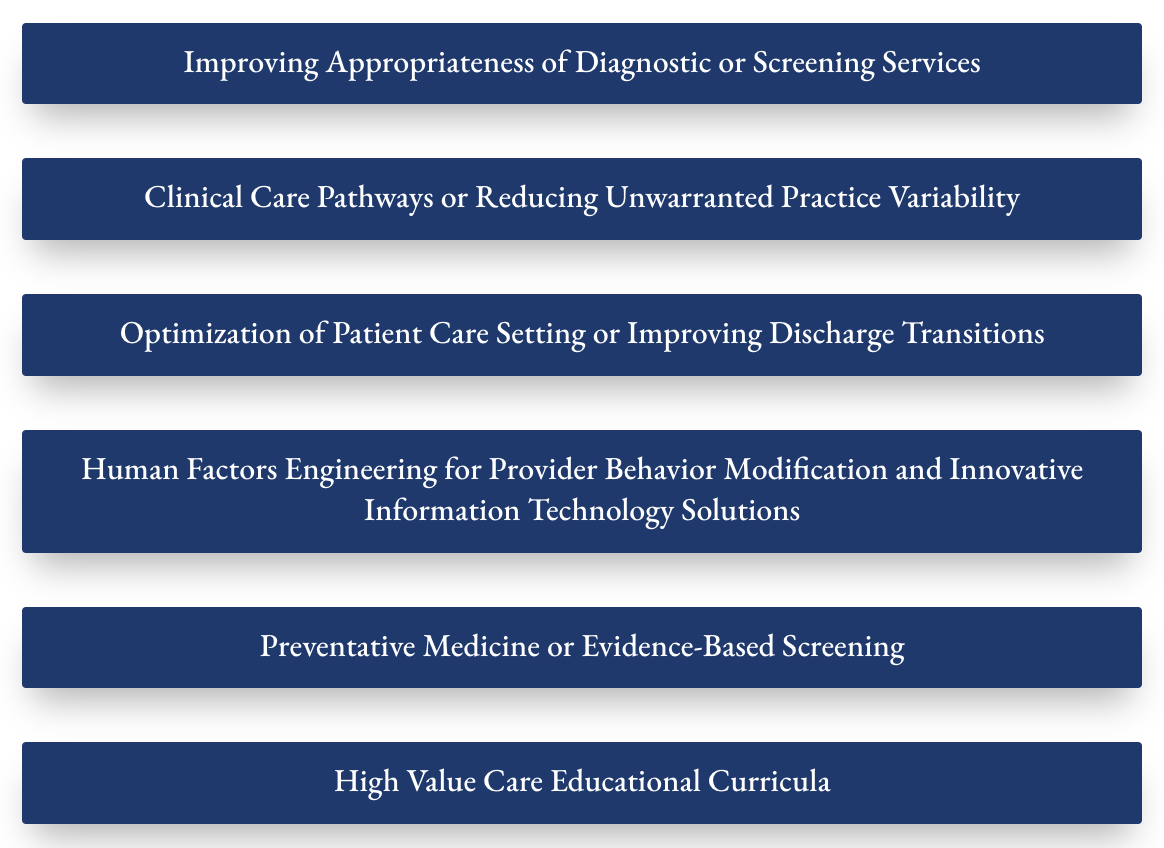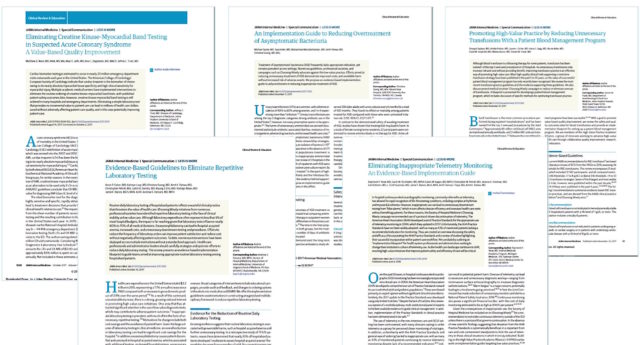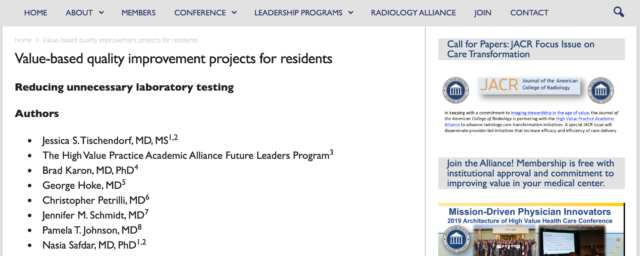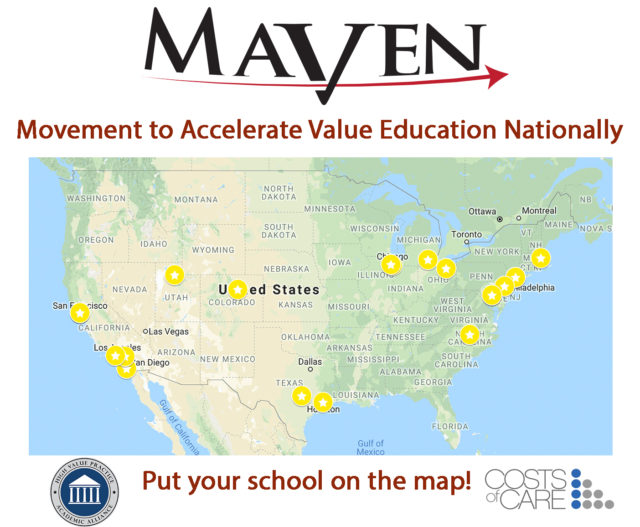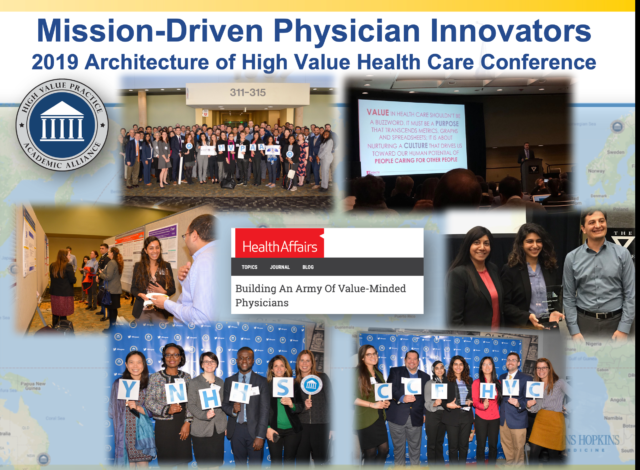From the 2019 HVPAA National Conference
Dr. Christopher Petrilli (NYU Langone Health), Mr. Steven Chatfield (NYU Langone Health), Ms. Michelle Ulrich (NYU Langone Health), Ms. Katie Tobin (NYU Langone Health)
Background
Since the 1999 publication of “First, Do No Harm”, well-intentioned quality improvement and patient safety work was largely prioritized by anecdotal evidence. In an effort to efficiently allocate resources to solve problems that had the greatest opportunity, we established an institution-wide initiative called NYU Langone’s Value Based Management (VBM). VBM’s integration within our finance department’s decision support and analytics group allowed for a new standardized approach to using data and analytics to: (1) identify high-value opportunities, (2) measure financial and quality outcomes, and (3) drive behavior change. We have established robust tools to track and monitor various metrics, create transparency to frontline providers, and develop physician facing dashboards to identify actionable opportunities.
Methods
We developed the ROI and Value Analysis (RVA) form that streamlines the intake process of value ideas, requiring providers to evaluate anticipated impact on cost, revenue, and quality. Our Decision Support and Value Improvement team then quantifies the impact by utilizing several internal data sources and Vizient benchmarking data to gauge performance against our peers. For each project, a custom analysis or dashboard is developed to allow all stakeholders to monitor progress of their implemented solutions and their eventual outcomes. Following an iterative approach between the operations team and VBM analytics team, a final dashboard is created to support long-term sustainability.
The VBM dashboard evaluates variability of patient safety/quality metrics, as well as variable direct cost differences by department, provider, service, procedure or DRG. Vizient CRM and ODB benchmarks are incorporated into the dashboard, allowing providers to compare their performance to that of their departments, as well as to other peer organizations. Some of the specific areas and expense groups that we have looked at include: readmission rate, length of stay, resource utilization, and HAC rates.
Results and Impact
By developing user-friendly analytical tools and establishing a strong governance structure, VBM has instilled a data-driven culture and platform for sustainable value improvement. Since the inception of VBM at NYULH in 2014, there have been over 125 projects, resulting in an estimated savings of over $250 million. To monitor project performance, financial and quality scorecards are presented to senior leadership quarterly.
To drive a culture of value, we have engaged providers at all levels, from integrating value into resident education to motivating Department Chairs through the VBM Department Incentive Program. The incentive program was designed to provide departments with a portion of their cost saving efforts, when successfully meeting quality and financial targets. Through an interactive dashboard, physicians can view their quality and cost opportunities on-demand, as well as their performance versus the Vizient benchmarks and their peers.
An example that reinforces our data-driven approach is the VBM Supportive Care initiative. Our leadership believed there was opportunity to improve quality of care for end-of-life (EOL) patients, but did not have the data to support this hypothesis. After a comprehensive analysis, it showed that EOL patients had a 2.05x readmission rate, 1.8x infection rate, 2.9 more ICU days, and 2.5x variable direct cost compared to the institutional average. To monitor these initiatives, an outcomes dashboard was created that highlighted targeted process metrics, such as ICU days and PICC line utilization, as well as key financial and quality metrics that are mutually beneficial to the patient and organization.
Figures



